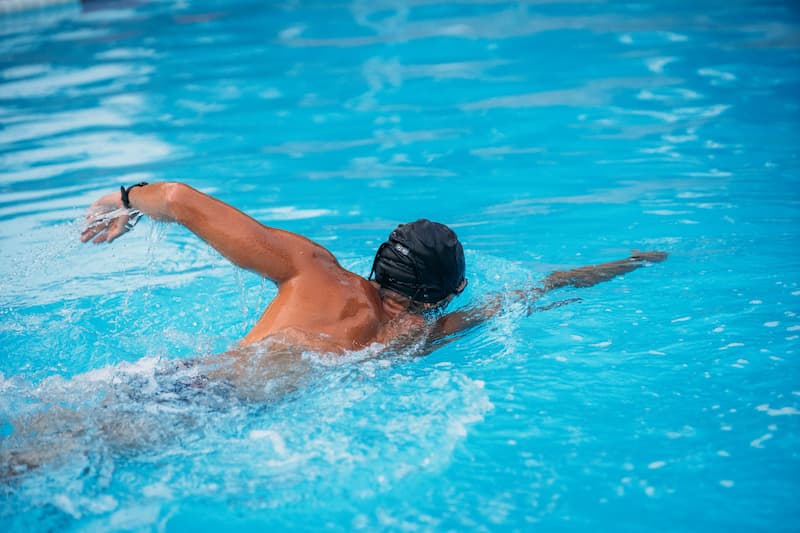Introduction:
Swimming is an excellent full-body workout that promotes cardiovascular fitness and muscular strength. However, like any sport, it comes with its own set of challenges, one of which is the notorious “swimmer’s shoulder”. In this blog post, we’ll delve into what swimmer’s shoulder is, its causes, and some preventive measures to keep your shoulders healthy in the ocean or pool.
What is Swimmer’s Shoulder?
Swimmer’s shoulder is a broad term used to describe shoulder pain commonly experienced by swimmers. It is associated with overuse and repetitive motion, as the shoulders are heavily involved in various swimming strokes. The constant overhead movement and the force exerted during each stroke can lead to inflammation, pain, and sometimes, injury.
Causes:
- Overuse and Poor Technique: Swimmers who overtrain or use improper techniques are more prone to developing this condition. It’s crucial to balance training intensity, rest, and maintaining correct form.
- Muscular Imbalances: Imbalances in the muscles around the shoulder joint can contribute to swimmer’s shoulder. Increased laxity can be developed due to repetitive use leading to rotator cuff muscle fatigue and injury. A well-rounded strength training program that targets the shoulders, back, and core can help prevent these imbalances.
Symptoms can commonly include:
- Pain during overhead movement
- Shoulder pain
- Decreased range of motion
- Muscle weakness
- Tenderness in the shoulder
Is it only swimmers who are affected?
No! As overuse injuries are common in many sports/careers (such as tennis players, construction workers, and electricians), it is important to strengthen muscles around the shoulder joint to prevent similar symptoms from arising.
Physiotherapy interventions for swimmer’s shoulder:
- Assessment and Diagnosis: Skilled physiotherapists conduct a comprehensive assessment, evaluating posture, muscle imbalances and joint mechanics to pinpoint the specific cause of swimmer’s shoulder.
- Manual Therapy: Techniques such as massage, joint mobilization, and soft tissue manipulation are employed to alleviate pain and improve range of motion in the shoulder.
- Exercise Prescription: Personalized exercise programs are designed with a focus on strengthening the rotator cuff and scapular stabilizers. Emphasis is placed on gradual progression to avoid overloading the muscles.
- Education: The importance of maintaining proper posture and understanding body mechanics both in and out of the water is emphasized to reduce strain on shoulder muscles.
- Return-to-Swimming Plan: Physiotherapists work with swimmers to establish a structured program, ensuring a smooth transition back to full training without risking further injury.
Conclusion:
Swimmer’s shoulder is a common ailment among swimmers that can cause discomfort and limitations to performance and daily tasks. With appropriate physiotherapy interventions involving a comprehensive rehabilitation program, this condition can be managed.
If you are experiencing symptoms consistent with Swimmer’s shoulder, book an appointment today or call our clinic on 9901 4000. We will get you back to enjoying the benefits of this wonderful sport while keeping your shoulders healthy and pain-free!
Nerissa D’Mello
Physiotherapist
References:
- Gholami, M., Halabchi, F., Mansournia, M. A., Mazaheri, R., & Goharpey, S. (2018). The Relationship between Shoulder Rotator Muscle Strength and Dynamic Stability in Swimmers. Asian Journal of Sports Medicine, 9(2), e59701. Link
- Sein, M. L., Walton, J., Linklater, J., et al. (2010). Shoulder Pain in Elite Swimmers: Primarily Due to Swim-Volume-Induced Supraspinatus Tendinopathy. British Journal of Sports Medicine, 44(2), 105-113.
- Smith, A., Rubenson, J., Lloyd, D., Ackland, D. (2013). Shoulder Kinematics During Swimming: A Comparison of International and National Level Swimmers. Journal of Science and Medicine in Sport, 16(4), 318-322.

